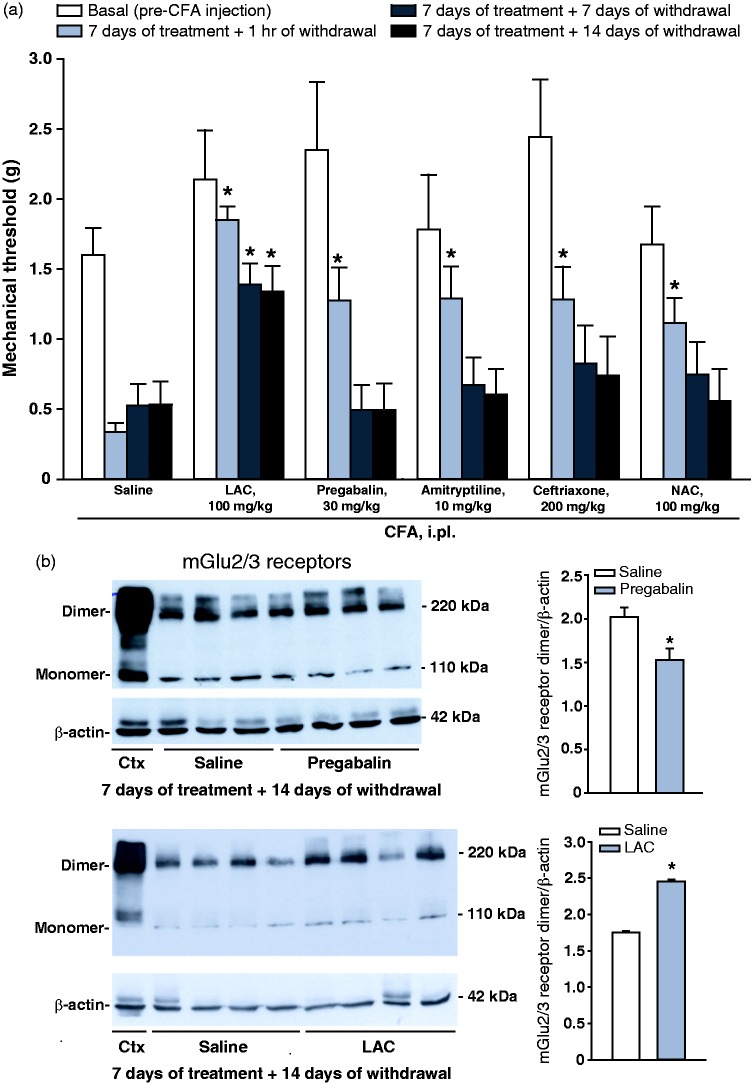Figure 4.
LAC has the unique property to induce a long-lasting analgesia in the CFA model of chronic inflammatory pain. Mice were injected i.p. with CFA and treated i.p. once a day for seven days with either saline, LAC (100 mg/kg), pregabalin (30 mg/kg), amitryptiline (10 mg/kg), pregabalin (30 mg/kg), ceftriaxone (200 mg/kg) or NAC (100 mg/kg). Pain thresholds measured under basal conditions, at the end of treatments, and then 7 and 14 days after drug withdrawal are shown in (a), where values are means ± S.E.M. of 8 determinations. *p < 0.05 vs. the corresponding values obtained in mice treated i.p. with saline (one-way ANOVA for repeated measures + Fisher’s LSD). F(23,161) = 6.399. mGlu2/3 receptor protein levels in the dorsal region of the ipsilateral lumbar spinal cord of the same groups of mice treated with saline, LAC or pregabalin are shown in (b), where values are means ± S.E.M. of three to four determinations. *p < 0.05 vs. values obtained in mice treated with saline (Student’s t-test; t = 3.199 for pregabalin and t = −24.07 for LAC).
CFA: complete Freund adjuvant; LAC: L-acetylcarnitine; mGlu2: type-2 metabotropic glutamate.

